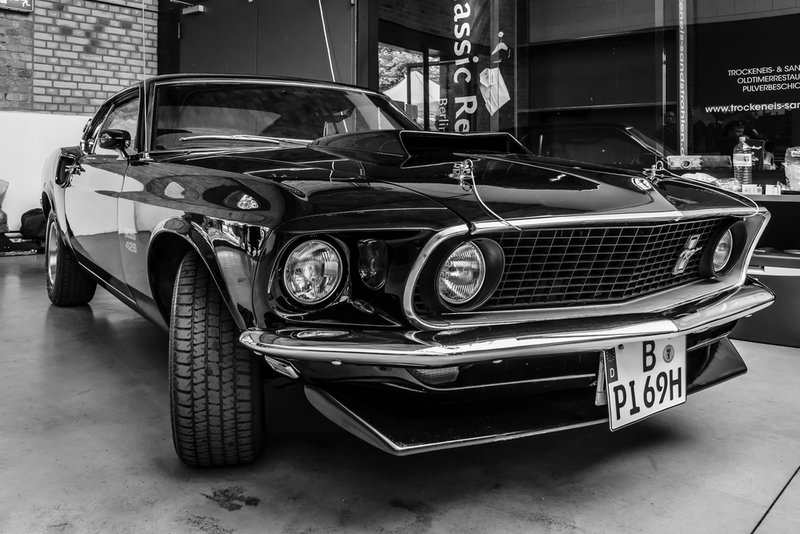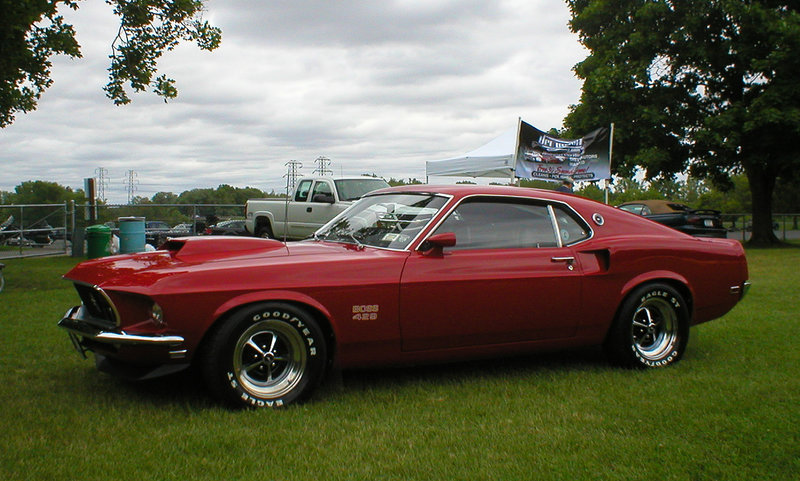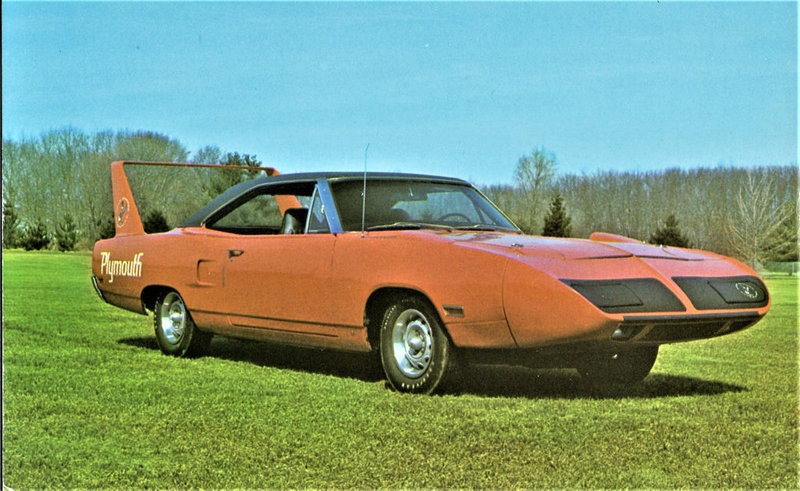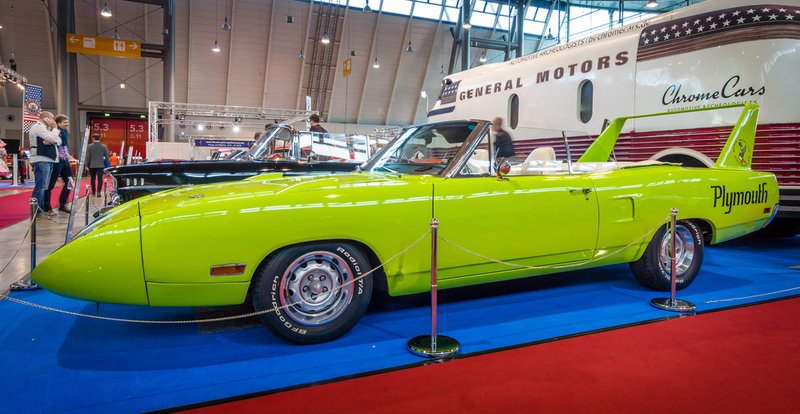1969 Ford Mustang Boss 429

source: ShutterStock
If you’re looking for arguably the rarest and most valuable American muscle car ever produced, you’ve probably found it: The 1969 Mustang Boss 429 – or simply the “Boss 9”, as enthusiasts call it – is, in fact, one of the rarest vehicles in existence on this side of the Atlantic and Pacific. Commanding prices that start at $400,000, the Boss 429 is rarely ever made available.
When it springs up for sale, it disappears in about 72 hours, to be carefully concealed in an anonymous collection (unfortunately). Seeing this car in person is like spotting a unicorn, and this alone makes it one of our favorites on our list. But that’s not good enough, so let’s dive into why it’s so stunning.
For starters, consider the engine Ford cooked up inside the hood, a unique take on big power: The 429. That’s over 7 liters, and it’s one of the biggest engines Ford has ever put in a production vehicle. The engine was significantly underrated – Ford advertised it made just 375 horses and 450 torques, though modern dyno runs have pegged a rebuilt motor (running conservatively and nowhere near its limits) at around 500 to 600 horses. The reason for making such a big displacement monster? Thank NASCAR and Dodge. Ford wanted to make a competitor that could stand up to the famed 426 Hemi that ran at the Sprint Cup Series. But Ford couldn’t just create a one-off machine to compete.

source: Wikimedia
NASCAR’s homologation rule required that for any make and model to be considered an entrant to the Series, at least 500 units had to be produced and sold to the public. So, Ford decided to use the ubiquitous Mustang as the host, knowing it would require little redesign and would sell quickly. In effect, Ford developed the most powerful racing engine they could and then slapped a car around it, just to get it into NASCAR with haste. Only 1,358 Boss 9s were made and it’s this low number, coupled with the popularity and love of rare Mustang trims, that helped the Boss 9 skyrocket to legendary status.
Plus, just look at it. The ’69 Mustang Fastback is a sexy car all itself, cleaning up body lines of generations past, giving modern takes on a classic design, and featuring functional body pieces. The quarter panel scoops, redesigned rear end, big, gaping front grille and hood scoop, and overall body contours are a thing of beauty. There’s a reason Ford took most of the ’69 Mustang’s design elements for the first “retro” introduction of the 2005 S197 Mustang. Throw one of Ford’s greatest and rarest engines in the bonnet, and you have one stunning muscle car.
1970 Plymouth Superbird

source: Wikimedia
We’re revisiting the ole’ Plymouth Barracuda because we haven’t given a fair nod to the greatest rendition of this classic, stunning muscle: The 1970 Plymouth Superbird. It’s a car even the ignorant passerby will recognize, thanks largely to its comically big (yet surprisingly aerodynamic) front bill and body. The whole thing is finished off with an equally cartoonish spoiler – rest assured, though, this too was not just for show.
That’s because the Superbird was designed for one thing: Competing and utterly dominating NASCAR. Just as Ford built their Boss 429 to kill Dodge’s Hemi, Plymouth responded to the competition in kind. This aero warrior went up against the Ford Torinos and Mercury Cyclones crowding the oval. Most agree that regardless of performance, the Superbird won the history books on looks and design alone.
NASCAR’s homologation rule applied to the Superbird, and in 1970, the organization required every dealer receive one. So, Plymouth built a total of 1,935 Superbirds. A small number even still, making the Superbird a car that easily fetches six figures at auction. The Superbird was a big mover and featured a Super Commando 440, 440 Six Pack, and even the 426 Hemi.

source: ShutterStock
The “smallest” motor configuration thumped out a whopping 375 horses and 480 torques, while the big Hemi provided 425 horses and 490 torques. Null to 60 took just 5.5 seconds and trapped the quarter mile in 14.26 seconds at around 104 mph. Not stunning enough? How about the realization that none other than The King himself, Richard Petty, sat in the hot seat? Fun fact: He and his wife even voice-acted for the animated film, featuring a living adaptation of the Superbird (Pixar’s Cars).
Even more stunning was the design prowess that went into the Superbird. Dodge used wind tunnel testing to build the Charger Daytona, which allowed the car to sport a low drag coefficient. Plymouth’s designers took that same data and extrapolated further improvements to make the Superbird easily capable of exceeding 200 mph. This is why the Superbird came with such a massive rear spoiler. Interestingly, some claim the spoiler only needed to be the height of the rear windshield to affect aerodynamics – we suppose it did, in fact, have a bit to do with loud styling.
Sadly, NASCAR’s aero craze died just one year after the Superbird came to fruition. The organization dictated that “aero cars” either weigh significantly more than their body brethren or have engine displacement limited to a meager 305 cubic inches. NASCAR cited the aero cars’ ability to reach dangerous speeds as the reason. Turns out, these cars were so efficient and powerful, the tires of the era couldn’t actually handle that much force. The Superbird was thus so far ahead of its time that it caused its own demise. That’s okay though because it earns a spot on our list of 25 stunning muscle cars without much ado.
